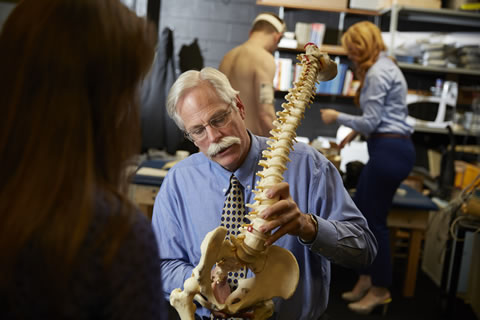Contrary to popular belief, spooning is not always the best sex position for those with a bad back, according to new research from the University of Waterloo.
The new research debunks the belief that spooning is the best position for men with bad backs and reveals exactly which ones work best for different types of back pain.
“Any family doctor will tell you that couples will often ask them how to manage their back pain during and after having sex. Many couples will remain celibate because one night of love-making can lead to months of back agony,” said Stuart McGill, a professor in Waterloo’s Faculty of Applied Health Sciences. “Until now, doctors have never had any hard science to base their recommendations upon.”
The research, published in the journal Spine shows that, contrary to popular belief, spooning during sex can actually trigger more pain for men with certain kinds of lower back problems.
First ever study of spine biomechanics during sex
It’s the first time ever that scientists have successfully documented the way the spine moves during sex and discovered exactly why certain positions are better than others when it comes to avoiding back pain.
The research team combined infrared and electromagnetic motion capture systems – like those used in the creation of video games – to track how 10 couples’ spines moved while engaged in five common sex positions. The findings were used to create an atlas, or set of guidelines, that recommends different sex positions and thrusting techniques based on which movements trigger a patient’s pain.
Guidelines show which positions will trigger pain
The atlas recommends that men who are flexion-intolerant, those whose back pain is made worse by touching their toes or sitting for long periods of time, replace spooning with doggy style sex. The guide also recommends that these men use a hip-hinging motion rather than thrusting with their spines. Men diagnosed as extension-intolerant, those who experience pain when arching their backs, are advised to use the missionary or spooning position.
“Spooning is often recommended by physicians as the one position that fits all. But we’ve found that’s not the best advice,” said Natalie Sidorkewicz, a PhD candidate at Waterloo and lead author on the paper. “There are sex positions that someone with one type of back pain may find comfortable, but that very same position may increase the back pain of another individual with different pain triggers.”
Science can now guide doctors
“For the first time ever, we have very solid science to guide clinicians on their recommendations for patients who suffer debilitating back pain, but still want to be intimate,” said Sidorkewicz. “This has the potential to improve quality of life – and love-life – for many couples.”
According to Statistics Canada, four of every five people will experience at least one episode of disabling low back pain in their lifetime. Up to 84 per cent of men and 73 per cent of women with low back pain report a significant decrease in the frequency of intercourse.
The study also shed light for the first time on the mechanics of the male orgasm. Electrodes hooked up to the male participants’ muscles revealed that it is abdominal and buttock, not back muscles, that are most active during orgasm. Spine motion, on the other hand, varied with the individual. For some males, a drastic increase in flexion or extension was seen, while for others spine motion did not change much at all.
“Many of the back pain patients we see have told us they experience elevated levels of pain during orgasm, to the point where they will avoid having one during sex with their partner,” said Sidorkewicz. “These initial findings help us to begin to understand what might be provoking their pain during the moment of climax.”
Agencies/Canadajournal
 Canada Journal – News of the World Articles and videos to bring you the biggest Canadian news stories from across the country every day
Canada Journal – News of the World Articles and videos to bring you the biggest Canadian news stories from across the country every day



